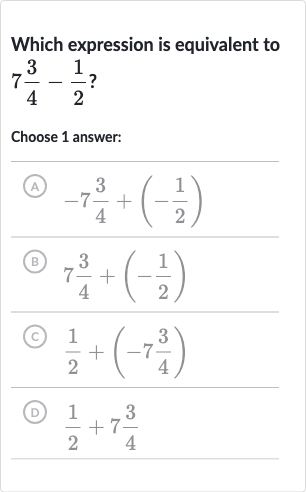Full solution
Q. Which expression is equivalent to ?Choose answer:(A) (B) (C) (D)
- Understand Original Expression: Understand the original expression.The original expression is , which means we have two fractions that we are subtracting from each other.
- Simplify Within Parentheses: Simplify the expression within the parentheses. simplifies to because multiplied by equals .
- Rewrite with Simplified Term: Rewrite the original expression with the simplified term.Now the expression looks like .
- Identify Equivalent Expression: Look at the answer choices and identify which one is equivalent to the simplified expression.(A) is not equivalent because it introduces a negative sign in front of the first term.(B) is not equivalent because it suggests addition rather than subtraction.(C) is not equivalent because it changes the order of the terms and the signs.(D) is not equivalent because it suggests addition rather than subtraction.
- No Matching Answer Choices: Realize that none of the provided answer choices match the simplified expression. The correct equivalent expression to is not listed among the choices. There might be an error in the question or the answer choices.

